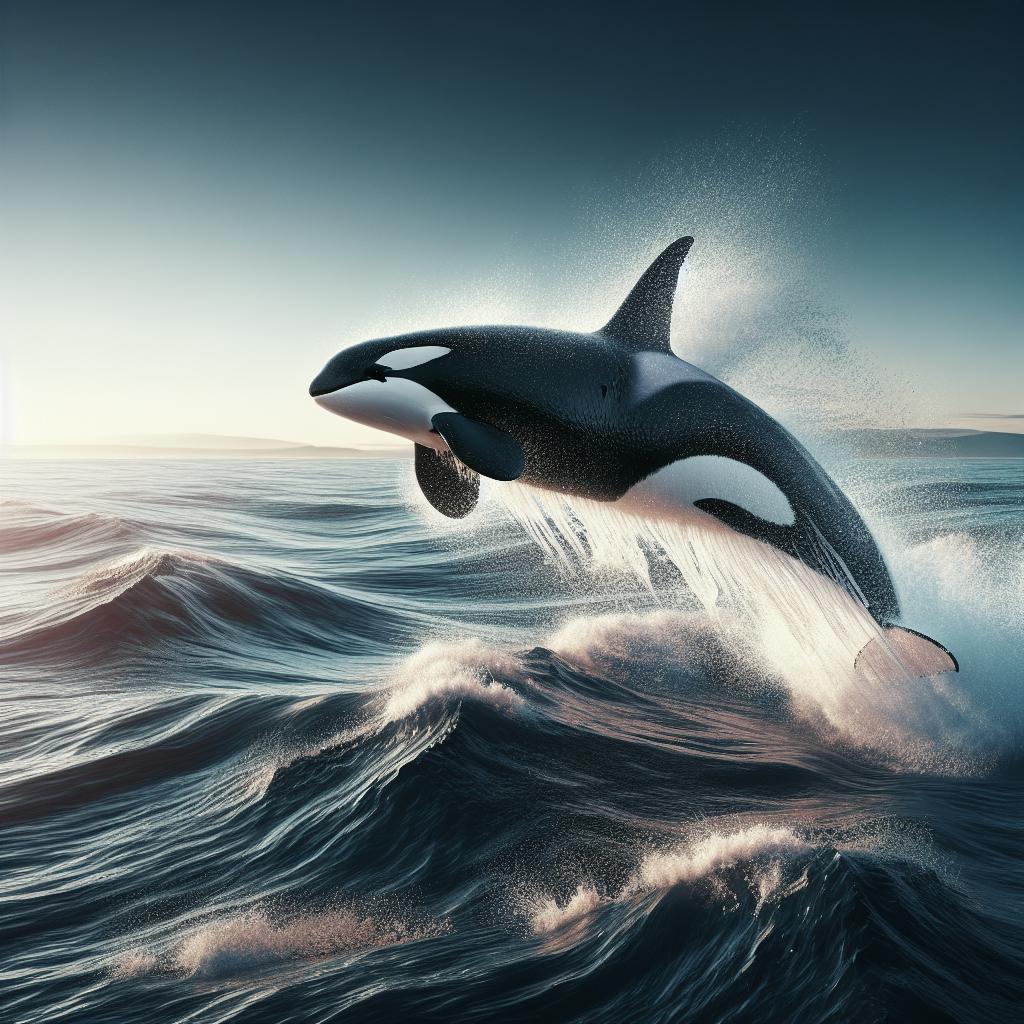“`html
Killer whales, or orcas, are among the most fascinating marine mammals. Known for their striking black and white coloring, these apex predators are fast and efficient swimmers. Understanding how fast killer whales can swim involves exploring their cruising speed, their impressive burst of speed while hunting, and the unique anatomical features that make them such remarkable swimmers. In this blog post, we will delve into the various aspects of their swimming capabilities, covering everything from their sustained speeds to the physical traits that give them a hydrodynamic edge.
Cruising Speed
Killer whales are known for their ability to cover vast distances in the ocean, often traveling long stretches in search of prey or during migration. On average, their cruising speed is around 5 to 6 miles per hour (8 to 10 kilometers per hour). This moderate speed allows them to conserve energy over longer durations, making it efficient for traveling significant distances without excessive exhaustion.
This cruising speed is generally maintained during periods of calm and non-aggressive behavior. While it’s not particularly fast when compared to their top speeds, it’s a testament to their endurance and ability to navigate through various marine environments efficiently. Family pods often travel together at this speed, ensuring that both young and old members of the group can keep up.
Hunting Speed
When it comes to hunting, killer whales showcase an entirely different side of their swimming prowess. These marine mammals can reach incredible speeds of up to 34 miles per hour (55 kilometers per hour) when chasing down prey. This dramatic increase in speed is a testament to their agility and strength, allowing them to perform quick, decisive hunting maneuvers to secure their food.
Such bursts of speed are typically short-lived, as maintaining such a high velocity can be energetically costly. However, these quick sprints are often enough to catch their prey off guard, whether it’s a seal on the edge of an ice floe or a fish darting through the water. The ability to switch from a leisurely cruise to a full-on sprint is a crucial aspect of their hunting technique, ensuring they remain at the top of the marine food chain.
Incredibly Streamlined
One of the key reasons killer whales can achieve such high speeds is their streamlined bodies. Their smooth, torpedo-like shape reduces water resistance, allowing them to glide through the ocean with minimal effort. This hydrodynamic efficiency is crucial not just for hunting but for traveling long distances as well. The less resistance they encounter, the less energy they need to expend to move at a given speed.
Additionally, their powerful, muscular tails provide the thrust needed for both their steady cruising and rapid sprints. Each flick of their flukes propels them forward with remarkable power, enabling both speed and agility. This combination of streamlined form and muscular strength creates a highly efficient mode of swimming that sets them apart from many other marine animals.
Fusiform Shape
The fusiform shape of killer whales is another attribute contributing to their remarkable swimming capabilities. This shape, tapered at both ends and wider in the middle, is ideal for fast movement through the water. Many aquatic animals, including fish and other cetaceans, exhibit this design, but killer whales exemplify it in an optimized form.
This natural design allows for swift and efficient movement, making them masters of their underwater domain. Their fusiform shape minimizes drag and turbulence as they move, allowing them to cut through the water with ease. This ability to minimize drag is vital for maintaining high speeds during hunting and efficient travel during migration or patrolling their territory.
See More Animals
Related Posts
- The Hunting Techniques of Orcas
- Marine Mammals and Their Adaptations
- Understanding Dolphin Communication
Popular Posts
Editor’s Picks
Summary of Main Points
| Aspect | Details |
|---|---|
| Cruising Speed | 5-6 miles per hour (8-10 km/h) |
| Hunting Speed | Up to 34 miles per hour (55 km/h) |
| Streamlined Body | Reduces water resistance, allowing efficient movement |
| Fusiform Shape | Minimizes drag, ideal for fast and efficient swimming |
“`


